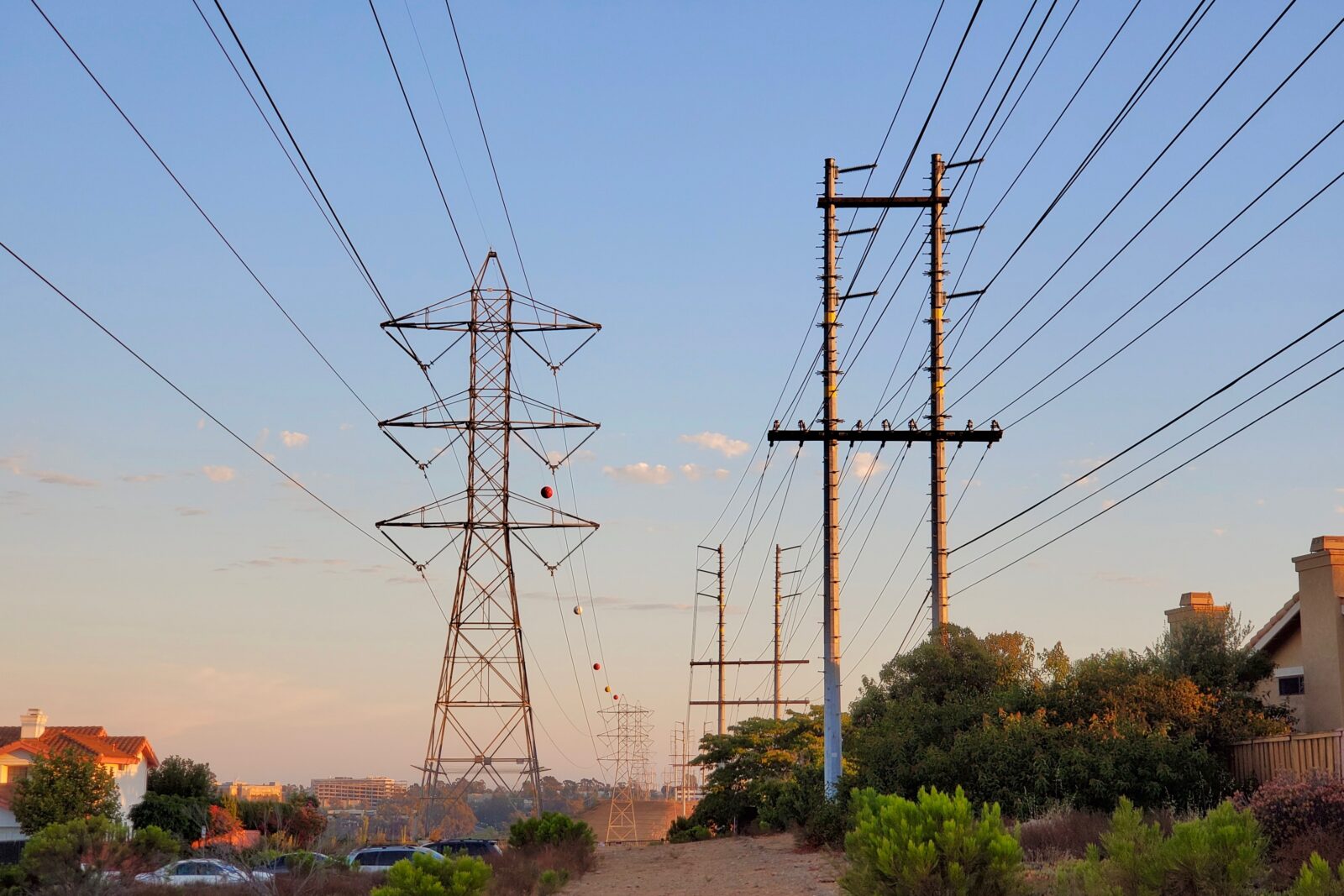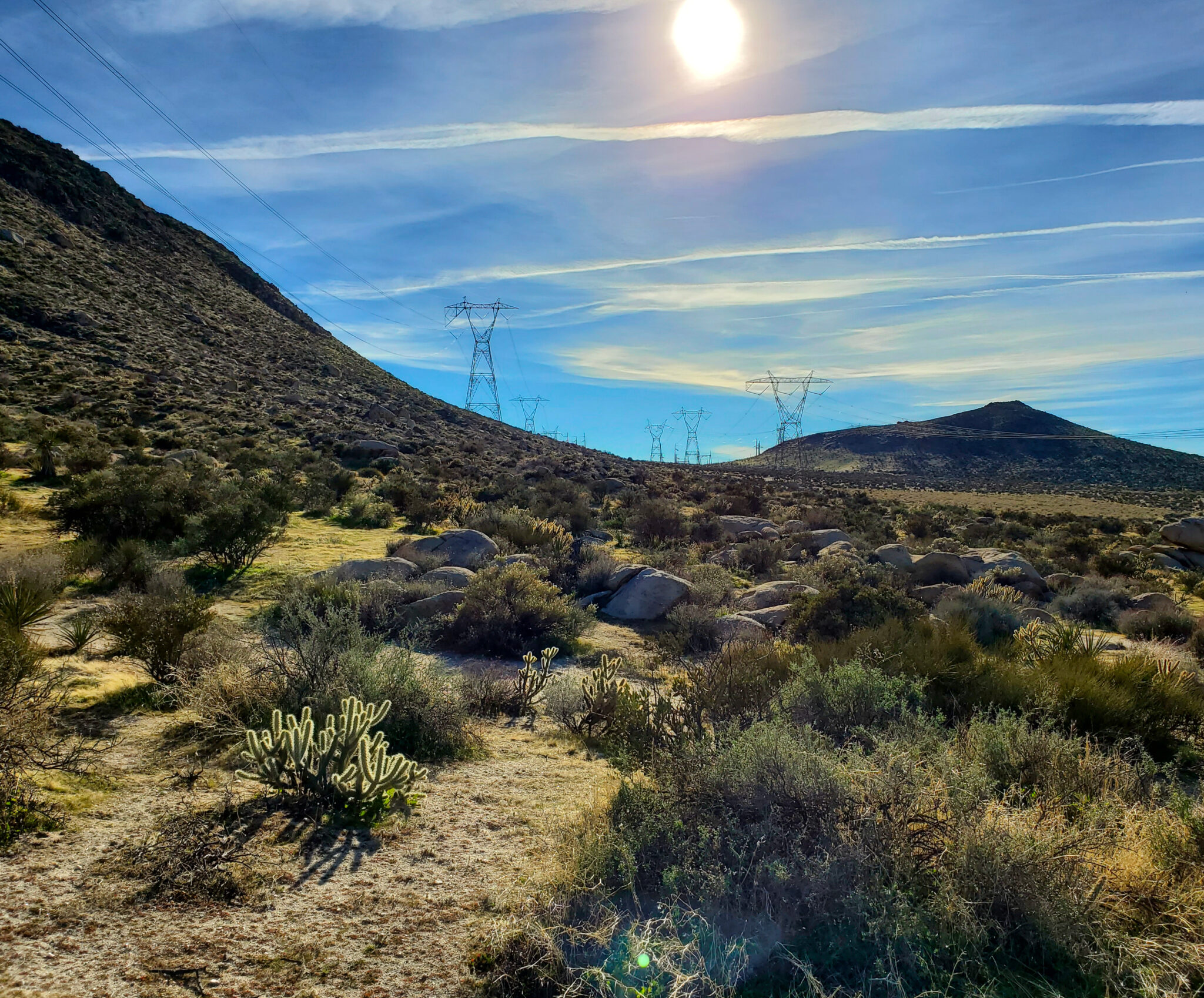This article by Joshua Emerson Smith originally appeared in the May 14, 2023, edition of the San Diego Union-Tribune. Since this article is accessible only behind a subscriber paywall, I’ve shared this particular article here because of its interest to our audience.
By Joshua Emerson Smith, San Diego Union-Tribune
San Diego is a mecca for rooftop solar, with some of the highest installation rates in the nation. And yet, many apartment buildings, warehouses and parking lots across the sun-soaked region lack photo-voltaic panels.
Meanwhile, pulling in renewable power from the desert and other far-flung locations has reached a choke point, with the $1.9 billion Sunrise Powerlink transmission line having effectively reached its capacity after just a decade in service.
San Diego County officials are now weighing how to best phase out fossil fuels by California’s target of 2045. The region has enough space within its borders, from rooftops to rural landscapes, to generate all the clean power it will need through mid-century, according to a recent report.
However, government programs that encourage solar in the city appear to be facing significant headwinds, most notably with the recent overhaul of how homeowners are compensated for rooftop installations.
Energy officials are eyeing a different strategy, one they argue would be significantly cheaper. The idea is to build more large solar fields in the Imperial Valley and then send that power to the coast. To realize this vision, San Diego Gas and Electric (SDGE) could get state approval to build another massive high-voltage line using ratepayer dollars.
With the most costly electricity rates in the country — nearly double Los Angeles and almost triple the national average — San Diego is arguably ground zero for one of California’s most crucial debates: What’s the cheapest and least environmentally destructive way to turn sun rays into energy?
Not-So-Straightforward Cost of Transmission
California is now scrambling to meet its climate goals, looking to nearly triple the annual construction rate of solar and wind energy, while increasing the yearly build-out of battery capacity roughly eight-fold, according to a landmark 2021 report from state energy officials. Demand for energy is expected to soar by mid-century as the state attempts to electrify everything from transportation to home-heating systems.
To help get there, the California Independent System Operator (CAISO) recently proposed building an estimated $9.3 billion in new transmission projects over the next decade. The CAISO Board of Governors is scheduled to discuss the ambitious plan at a hearing on Thursday.
The blueprint’s most costly venture is a proposed 145-mile high-voltage transmission line between Imperial Valley and northern San Diego County, projected to cost ratepayers about $2.3 billion. The idea is to take advantage of fallowed farmland and other rural landscapes where large solar fields can generate power relatively cheaply thanks to their economies of scale.
One of California’s top proponents of large solar projects has been Severin Borenstein, a UC Berkeley energy economist who also serves on CAISO’s five-member oversight panel. He has frequently argued that an electrical grid that relies too heavily on rooftop solar will prove much pricier than one that prioritizes larger, remote installations.
“It’s expensive,” Borenstein said of small rooftop arrays. “If it were the same cost as grid-scale solar, I think, everyone would be for it.”
California energy officials have yet to provide a straightforward analysis of ratepayer impacts associated with remote versus urban solar projects. But there are some data points to at least help frame the debate.
The cost to build and operate a large-scale solar field, for example, currently ranges between $24 to $45 to generate a megawatt of electricity over one hour, according to the National Renewable Energy Laboratory. Factors include everything from the intensity of the sun at a given location to financing and maintenance expenses.
For smaller rooftop installations, the cost can be double or even triple that of large-scale arrays, according to the Colorado-based lab, which is overseen by the U.S. Department of Energy. For solar panels on warehouses or other commercial properties, generating energy can run from $45 to $85 a megawatt hour. Residential is pegged at $77 to $138 a megawatt hour.
However, those estimates, known as the “levelized cost of energy,” don’t include the financial burden of large transmission lines needed to connect remote solar farms to urban areas. They also don’t factor in more subjective values such as the environmental impacts of building huge power lines through rural landscapes or the ability of rooftop solar to keep the lights on during a blackout.
Borenstein said he doesn’t know exactly how much rooftop solar saves in transmission costs, but he said it’s likely around $10 a megawatt hour on average — not enough in most cases to make up for the current price advantage of larger projects.
Others vehemently disagree, such as Bill Powers, a former utility consultant and board member of The Protect Our Communities Foundation, a San Diego-based nonprofit. As an expert witness before the California Public Utilities Commission, which regulates investor-owned utilities such as SDGE, he has routinely argued for programs that encourage the adoption of rooftop solar.
Powers calculated that Sunrise Powerlink adds roughly $90 a megawatt hour to the cost of the energy it delivers, making rooftop solar in San Diego just as viable as remote installations. He suggested that medium-sized projects on commercial buildings and vacant property around urban areas may end up providing the best bang for the ratepayer’s buck, especially when paired with battery storage.
“They don’t want to discuss the huge incremental burden that those new transmission lines put on remote solar and wind,” Powers said of energy officials. “A rooftop solar array is more than paying for itself by just offsetting the need to add more poles and wires.”
While the cost of generating electricity is a major component of retail rates, other expenses include not only building out and maintaining the grid but efforts to prevent power lines from starting wildfires, low-income assistance programs and shareholder profits.
All told, SDGE charges ratepayers on average about $470 a megawatt hour, or $0.47 a kilowatt hour. A typical California household uses about 6.5 megawatt hours a year, according to the U.S. Department of Energy.
Powers pointed out that the CAISO board in 2018 was able to cancel $2.6 billion in planned transmission projects across the state largely as a result of energy-efficiency programs and widespread adoption of rooftop solar.
SDGE declined to comment on how much building the Sunrise Powerlink added to ratepayer costs. Instead, the utility called attention to its transmission access charge, which is tacked onto customer bills to help cover the cost of the grid.
That transmission charge has skyrocketed since the San Diego utility completed the 117-mile transmission line in 2012. The fee was more than $63 a megawatt hour as of April, compared to about $30 a megawatt hour for Pacific Gas and Electric and less than $14 a megawatt hour for Southern California Edison — the state’s two other large investor-owned utilities.
CAISO estimates that its $9.3 billion proposal would on average increase utility transmission charges by about $8 a megawatt hour over the next decade. The agency’s blueprint, which includes 45 projects, also looks to build connections with Nevada and Arizona to move renewable energy from as far away as New Mexico, Idaho and Wyoming.
Still, one difficulty in comparing the financial trade-offs between urban and remote projects is that the cost of transmission can be hard to predict.
Several industry groups have already raised concerns about the financial viability of building a new power line through San Diego’s backcountry, especially given the likely environmental and regulatory hurdles.
The California Wind Energy Association, for example, recently pointed out that CAISO initially estimated the $1.9 billion Sunrise Powerlink would cost just $700 million before having to be rerouted around Anza-Borrego Desert State Park.
The new line through San Diego will be “similarly controversial,” the group wrote in a comment letter on the plan, “requiring more time to permit and likely leading to costly mitigation measures.”
The consulting firm Gridworks went a step further in its feedback to CAISO: “Based on simple geography, such a line will be extremely challenging to permit, and may prove to be simply infeasible, given the mountains, parks and developed suburbs that lie in the proposed path.”
Hot Town, Solar in the City
Shiny, black solar panels blanket the Sanford Burnham Prebys research institute in La Jolla, including a two-story parking structure, complete with electric vehicle charging stations.
The $2.5 million installation, which includes batteries, has been an “amazing investment,” said John Reed, who is director of facilities at the nine-building campus. “It’s a very quick payback.”
San Diego boasts the most rooftop solar of any county in California under the state’s net-energy metering program. The region currently has 1,739 megawatts of such capacity, compared to just 1,096 megawatts in Los Angeles County.
But the sun may be setting on the rooftop solar industry.
Like many property owners, the medical research institute in La Jolla recently scrambled to submit the paperwork for its last installation before California significantly changed its rules for net-metered solar.
Utilities have argued that such rooftop solar customers aren’t paying their fair share for maintaining the electrical grid, causing other ratepayers without solar to shoulder an ever greater portion of those costs. The Public Utilities Commission agreed, dramatically slashing the compensation that residents and businesses receive for their unused solar power.
While homeowners and solar installers protested, some prominent environmental and ratepayer advocacy groups agreed with the state’s decision, arguing among other things that the switch would encourage residents to adopt battery systems to avoid paying higher rates once the sun goes down.
“There’s a whole bunch of consumer and environmental groups, who are fighting the utilities day in and day out, who say there is need for reform,” said Matthew Freedman, staff attorney with The Utility Reform Network, or TURN. “It’s having huge distortions on overall rate levels.”
Freedman argued that San Diego’s exceptionally high electrical rates are largely the result of rooftop solar coupled with the region’s relatively expensive grid system.
“SDGE had an explosion of net metering, so you have a big chunk of customers not paying very much for upkeep, and at the same time, the utility has gone on a massive spending spree,” he said.
A group of nonprofits — including The Protect Our Communities Foundation, Center for Biological Diversity and Environmental Working Group — recently sued the California Public Utilities Commission (CPUC) for slashing rooftop solar incentives.
The lawsuit claims that SDGE and other investor-owned utilities have lobbied for policies that limit small rooftop solar installations because the state guarantees a roughly 10 percent profit margin on building large transmission lines and other capital investments.
SDGE, which pulled in $915 million in profits last year, has downplayed its role in such policy decisions.
“As a regulated utility, SDGE depends on CAISO’s expertise and authority to determine what transmission gaps need to be filled to meet the state’s reliability and climate goals,” the utility said in an e-mail to the Union-Tribune.
Advocates for rooftop solar rejected that characterization.


